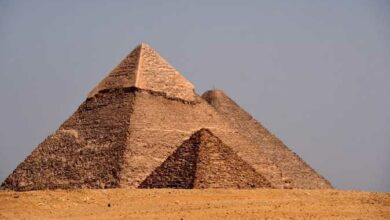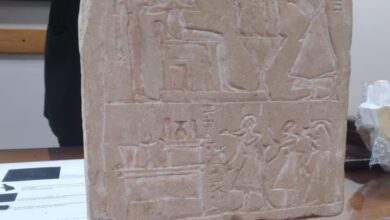There is no doubt that Nicholas Reeves, who champions a theory that the tomb of Queen Nefertiti is located behind the walls of Tutankhamun’s tomb, has succeeded into taking us in by his illusions, garnering much fame and wealth through offers to author books, articles and to appear in TV programs that revolve around his myth.
If we rely on reason and science, we discover that it is impossible for Nefetiti to be buried at the Valley of the Kings. The reason is that Nefertiti was not only a devout follower of the Atun faith, which is hostile to Amun’s oracles, but also acted as one pillar and a primary driving force for that religion. Therefore, the oracles of Amun, exercising vast influence on that region, would not permit her burial. Even if we presume they did, they would never bury her in a part of the king’s tomb, since it would violate Ancient Egyptian doctrines that place the king in a sublime position, unreachable even by his household. The destiny of kings in the afterlife was also believed to be distinguished from that of commoners, which is why their tombs were always supplied with funerary furniture in support of their immortality.
Back to Reeves, we can find he possesses a history of false claims. One example is when he worked briefly at the Valley of the Kings as part of the Geoffrey Martin mission. Back then, he claimed that he, in collaboration with Japanese radar experts, had managed to discover a hidden grave at the front of Tutankhamun’s tomb, an announcement that he published in the form of a map on his internet pages.
Later came the surprise, with Egyptian missions excavating Reeve’s alleged discovery between 2008 and 2009, only to realize that his discovery was merely a natural crack in the valley’s rocks.
To sum up the story behind Tutankhamun’s tomb, the king died suddenly and there was no tomb ready to receive him at the Valley of the Kings. Tutankhamun had no heir to his throne, necessitating a quick burial for the king, while ensuring that a successor assumed the throne, thus securing universal stability, according to the Ancient Egyptian beliefs.
That’s why King Ay assumed responsibility for the king’s burial, taking over the throne as a legitimate king who belonged to the royal family. Ay found no other solution than to redesign his own tomb at the Valley of the Kings in a more compact way, thus speeding up the burial.
The story of redesigning the tomb has been well-known throughout Egypt’s ancient history, and evidence of it can be found in the discoveries of French archaeologist Christian Leblanc at the Valley of the Queens. Leblanc unearthed a tomb that skillfully hid extensions behind. He went on digging in search of possible relics and treasures, but to no avail.
Evidence can be found at Tutankhamun’s tomb that it was Ay who oversaw the burial process, since there is a great similarity between Tutankhamun’s tomb at the Valley of the Kings and Ay’s at the nearby Valley of the Baboons.
I have given a piece of advice to new Antiquities Minister Khaled al-Enani: assign a panel of scientists to study this issue in a scientific manner, so that Egypt will not lose its international credibility.
Zahi Hawass ia a former Egyptian antiquities minister




